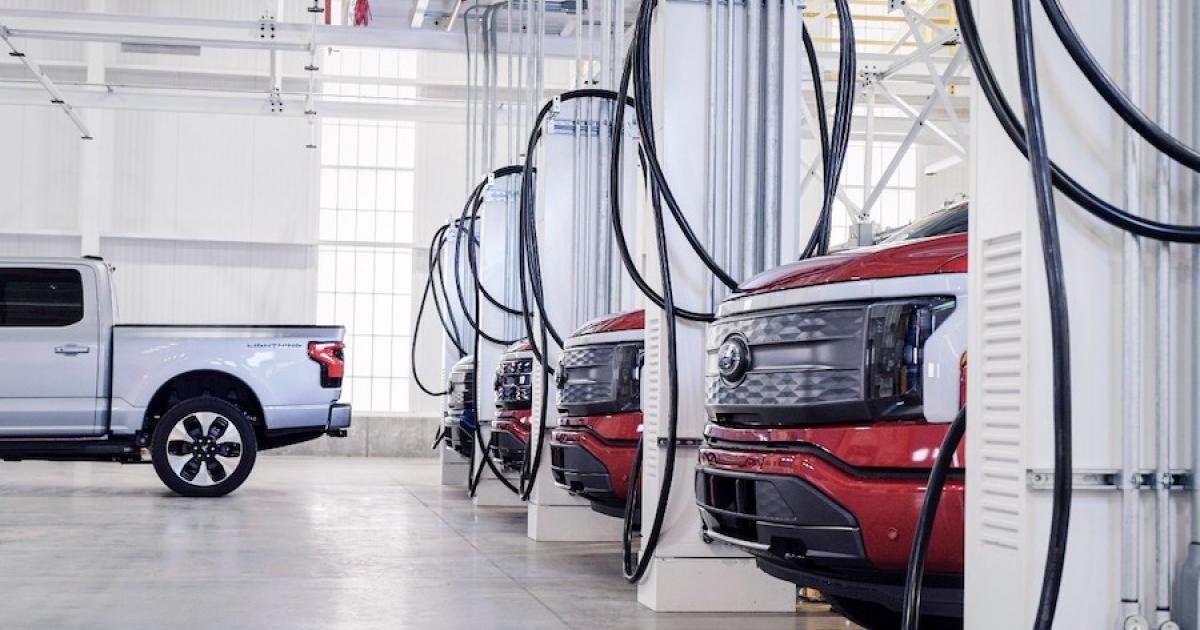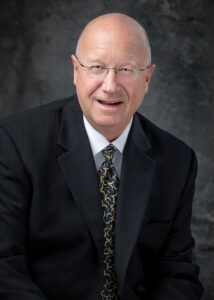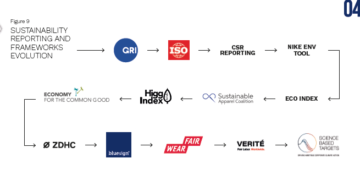
$9.2 billion. A gobsmackingly massive amount of money — UC Berkeley calculated it would take 95 years just to verbally count to 1 billion.
So you can appreciate the buzz created by recent news about the Department of Energy Loan Program Office’s decision to approve the single largest loan in its history — $9.2 billion to BlueOvalSK, a joint venture between Ford Motor Co. and SK On, a South Korean-based battery corporation, focused on electric vehicle battery production. The previous largest loan granted by the Loan Program Office (LPO) was in 2009 — also to Ford, at $5.6 billion.
For those less familiar, the LPO was created in 2005 to support the scale-up of innovative energy technologies via loans. It is notable for rescuing Tesla from bankruptcy in 2010 with a $465 million loan. The LPO recently benefited from an injection of cash courtesy of the Inflation Reduction Act (IRA), totalling $400 billion. So it makes sense that it would dedicate a large portion of that budget to the development of three U.S.-based electric battery manufacturing plants. As of June 30, the LPO has issued close to $38 billion in loans and loan guarantees.
So what led to this moment, and what else is happening behind the scenes? Jigar Shah, director of the LPO, recently joined journalist Akshat Rathi on Bloomberg’s Zero podcast to get into the details. Here are a few key takeaways.
There's plenty of money, so apply already
Every federal office changes from administration to administration, fluctuating in funding and personnel. Shah’s LPO is no different, benefitting this time around from his previous experience as the founder of SunEdison, an early renewable energy company.
Citing his past as an entrepreneur, Shah explained in the podcast how his office handles each application: "We take the time, in this particular iteration of the Loan Programs Office, to explain to people why we’re passing on their approach or their technology or what the deficiencies are in their application that need to be corrected for us to be able to consider their application."
Building off that, Shah said he is stripping financial industry jargon out of the loan application process to make it a more productive experience for applicants. He noted that, typically, most feedback for loans is coded for those who "worked on Wall Street."
During the Trump administration, the LPO "laid dormant," according to Rathi. When asked how it is making up for lost time in the quest to reach net zero, Shah said, "We are making sure that people know [the LPO] is open for business." And he proceeded to do just that, listing programs funded through the LPO, including:
- Innovative Clean Energy Projects, "which is where [the LPO] is providing liquidity to technologies that really can’t get it anywhere else." The initiative aids in the deployment of proven technology — including renewable energy, grid enhancement tech, and carbon capture and sequestration tech — that is not yet commercialized. The first beneficiary of this program, announced in June 2022, was Advanced Clean Energy Storage. Its Utah-based project focusing on clean hydrogen storage received $504.4 million.
- The "1706" program, which helps "companies who have existing coal plants, natural gas plants, oil and gas pipelines, refineries, etc., transition those assets so that they can be relevant in the energy transition for the next 50 years." The official name of this effort is the Energy Infrastructure Reinvestment Program, and it was designated $5 billion by the IRA.
- The Tribal Energy Loan Guarantee Program, "where there’s no innovation required — it’s really about helping the tribes to participate in the clean energy revolution." The IRA increased the program’s available loan authority from $2 billion to $20 billion, and added $75 million to carry out the program.
Ultimately, Shah’s goal for the LPO is "to make sure that people who are pursuing projects at speed and scale in the private sector have a place to go to be able to get the debt that they need to move their project confidently forward." Companies of any size are eligible for funds.
Have a strong domestic story? Tell it
Shah clarified why a commercial project such as BlueOvalSK was so financially prioritized. Simply put, LPO didn’t want to lose out on the three EV battery facilities Ford wanted to build in the U.S.
With the LPO’s loan secured, Ford could plan "onshoring and reshoring capacity that otherwise may have been put into another country and imported," Shah said. Losing the facilities could render the U.S. dependent on foreign entities for the clean energy transition. What’s more, it would make it tougher for companies and EV buyers to qualify for EV tax credits introduced in the IRA, which require that EV components be manufactured in the U.S.
Ford’s status as the manufacturer of the top-selling vehicle in the U.S., the Ford F-150 truck, and its successful introduction of an EV alternative, the Ford F-150 Lightning, were big factors in the loan decision. The LPO determined that combining SK’s innovative battery tech with Ford’s widely popular F-150 was one sure route to mass adoption and acceptance from American buyers.
Another factor that contributed to LPO’s decision to grant the loan was that the lithium-iron battery technology might be used for other applications such as solar generators and energy storage systems — the same energy storage systems that the U.S. is woefully lacking and that could hold the country back from fully realizing its green energy goals.
Moving forward, the LPO plans to continue receiving and processing applications to take full advantage of its massive budget. In July, LPO was assessing 157 applications requesting a total of $138.9 billion in loans. Wrapping up his conversation with Rathi, Shah concluded, "What’s really fun [as director of the LPO] is to see how many people are actually opening their eyes to what’s possible, and going for it."
[Want more great analysis of the clean energy transition? Sign up for the Energy Weekly newsletter.]
- SEO Powered Content & PR Distribution. Get Amplified Today.
- PlatoData.Network Vertical Generative Ai. Empower Yourself. Access Here.
- PlatoAiStream. Web3 Intelligence. Knowledge Amplified. Access Here.
- PlatoESG. Automotive / EVs, Carbon, CleanTech, Energy, Environment, Solar, Waste Management. Access Here.
- BlockOffsets. Modernizing Environmental Offset Ownership. Access Here.
- Source: https://www.greenbiz.com/article/jigar-shah-unpacks-record-breaking-92-billion-doe-loan
- :has
- :is
- :not
- :where
- $UP
- 1
- 2005
- 2022
- 30
- 50
- 50 Years
- 9
- a
- Able
- About
- acceptance
- According
- Act
- actually
- added
- administration
- Adoption
- advanced
- ADvantage
- aids
- also
- alternative
- American
- amount
- an
- analysis
- and
- announced
- Another
- any
- anywhere
- applicants
- Application
- applications
- Apply
- appreciate
- approach
- approve
- ARE
- around
- AS
- Assessing
- Assets
- At
- authority
- available
- back
- Bankruptcy
- battery
- battery production
- BE
- been
- behind
- behind the scenes
- beneficiary
- benefitting
- Berkeley
- between
- Big
- Billion
- Bloomberg
- budget
- build
- business
- buyers
- by
- CAN
- Capacity
- capture
- carbon
- carbon capture
- carry
- Cash
- Changes
- clarified
- clean energy
- Close
- CO
- Coal
- coded
- combining
- commercial
- Companies
- company
- components
- concluded
- confidently
- Consider
- continue
- contributed
- Conversation
- CORPORATION
- corrected
- could
- country
- created
- Credits
- Debt
- decision
- dedicate
- Department
- Department of Energy
- dependent
- deployment
- designated
- details
- determined
- Development
- different
- Director
- do
- DOE
- Domestic
- each
- Early
- effort
- Electric
- electric vehicle
- eligible
- else
- energy
- energy projects
- enhancement
- entities
- Entrepreneur
- etc
- Ether (ETH)
- EV
- existing
- experience
- Explain
- explained
- Eyes
- facilities
- factor
- factors
- familiar
- Federal
- feedback
- few
- financial
- financially
- focused
- focusing
- For
- Ford
- foreign
- Forward
- founder
- from
- full
- fully
- fun
- funded
- funding
- funds
- GAS
- generators
- get
- Go
- goal
- Goals
- going
- grant
- granted
- great
- Green
- green energy
- Grid
- guarantee
- guarantees
- Handles
- Happening
- Have
- he
- helping
- helps
- here
- his
- history
- hold
- How
- HTML
- HTTPS
- hydrogen
- in
- Including
- increased
- industry
- inflation
- Infrastructure
- Initiative
- Innovation
- innovative
- into
- introduced
- Introduction
- IRA
- IT
- iteration
- ITS
- jargon
- joined
- joint
- joint venture
- journalist
- jpg
- July
- june
- just
- Key
- Know
- large
- largest
- Led
- less
- lightning
- Liquidity
- listing
- loan
- Loans
- lose
- losing
- lost
- make
- MAKES
- Making
- manufactured
- Manufacturer
- manufacturing
- many
- many people
- Mass
- Mass Adoption
- massive
- May..
- might
- million
- moment
- money
- more
- most
- Motor
- move
- name
- Natural
- Natural Gas
- Need
- net
- Newsletter
- next
- no
- notable
- noted
- of
- off
- Office
- official
- Oil
- Oil and Gas
- on
- ONE
- open
- opening
- or
- Other
- otherwise
- out
- participate
- particular
- Passing
- past
- People
- Personnel
- Place
- plan
- plans
- plants
- plato
- Plato Data Intelligence
- PlatoData
- Plenty
- podcast
- Popular
- possible
- previous
- prioritized
- private
- private sector
- process
- processing
- Production
- productive
- Program
- Programs
- project
- projects
- proven
- providing
- put
- qualify
- quest
- reach
- realizing
- really
- received
- receiving
- recently
- reduction
- relevant
- Renewable
- renewable energy
- require
- required
- Revolution
- Route
- s
- Said
- same
- Scale
- scale-up
- scenes
- sector
- Secured
- see
- sense
- sequestration
- sign
- simply
- single
- Size
- So
- solar
- South
- speed
- Spotify
- Status
- storage
- Story
- street
- stripping
- strong
- successful
- such
- support
- sure
- Systems
- Take
- Takeaways
- tax
- tech
- Technologies
- Technology
- tell
- Tesla
- that
- The
- The Buzz
- The Initiative
- their
- they
- this
- those
- three
- Through
- time
- to
- Total
- transition
- tribes
- truck
- trump
- Trump administration
- typically
- u.s.
- us
- used
- vehicle
- venture
- via
- Wall
- Wall Street
- want
- wanted
- was
- we
- were
- What
- when
- which
- WHO
- why
- widely
- with
- woefully
- worked
- would
- years
- yet
- you
- zephyrnet
- zero











